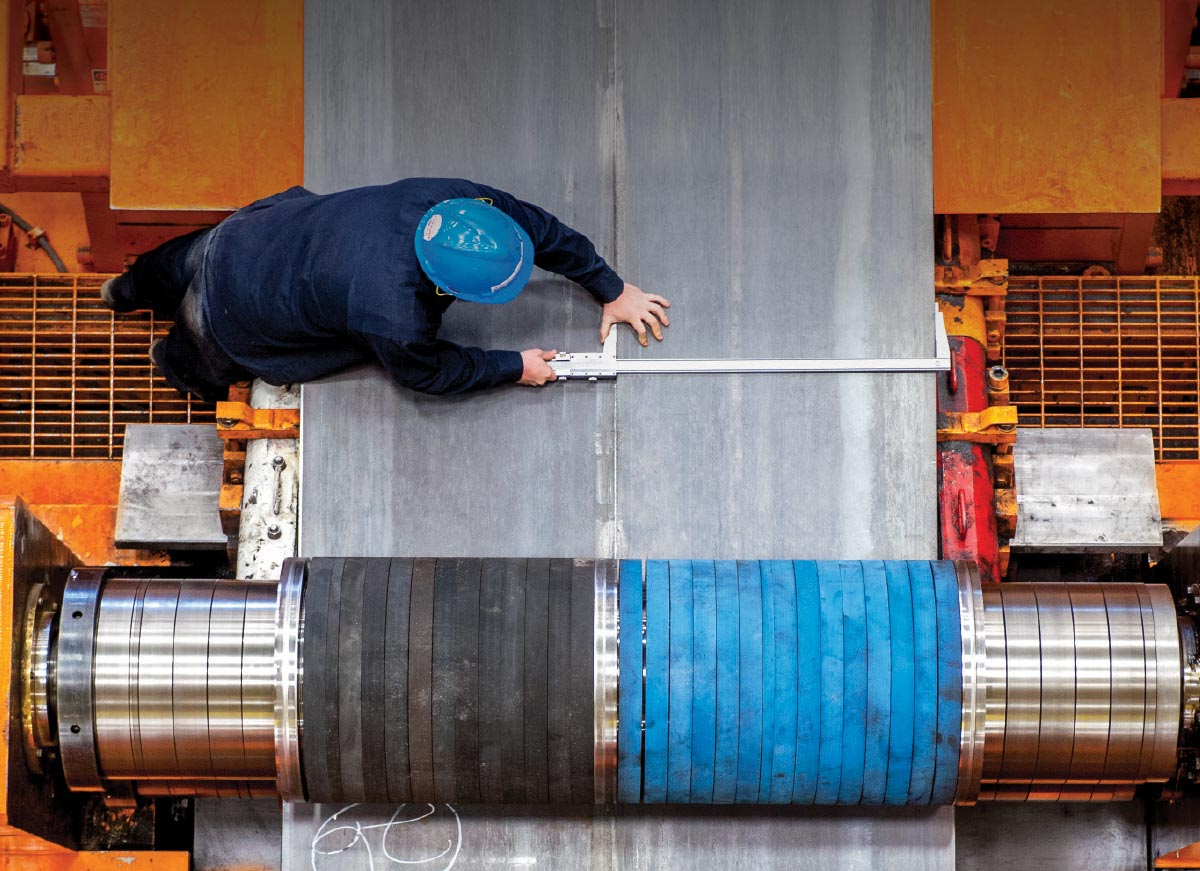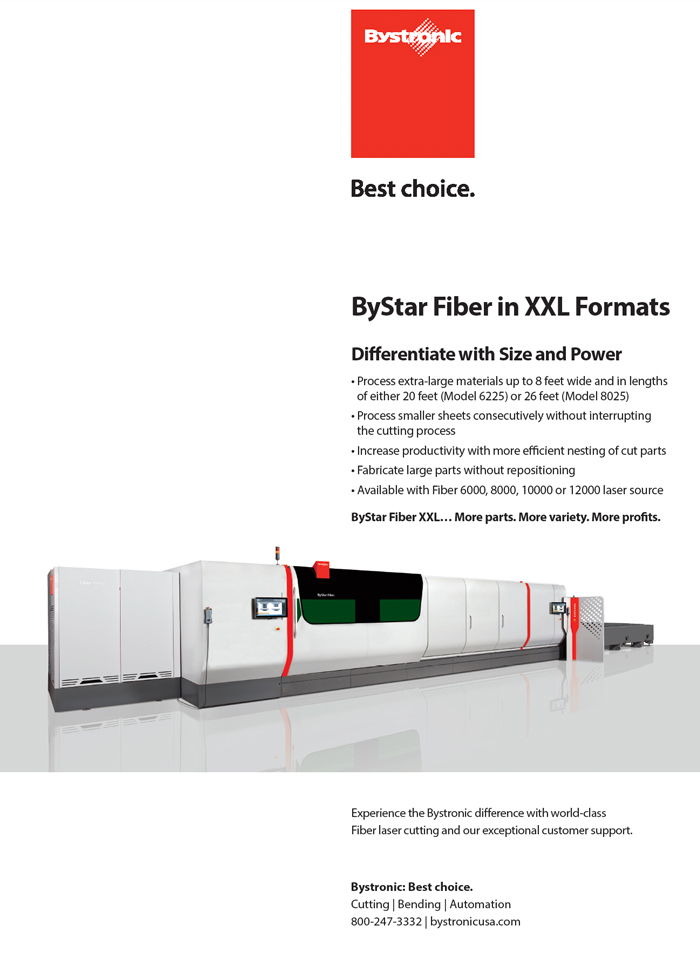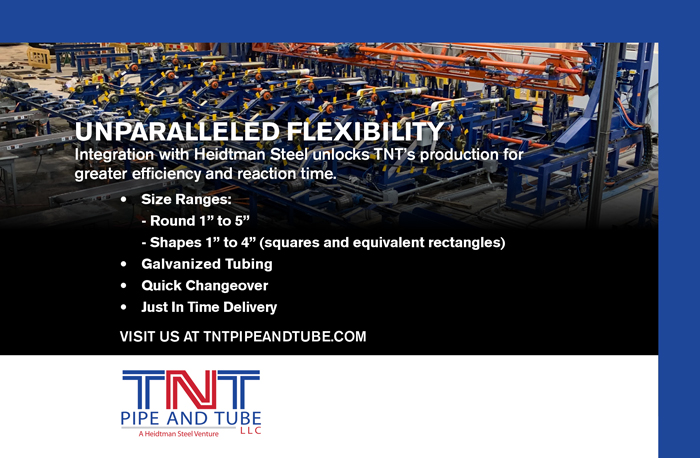eing essential to the infrastructure of manufacturing and being able to count on a government program to shore up payroll, toll processors pulled back from the brink of crisis in the last months of 2020. Executives express a cautious confidence that a recovery—for their businesses and the economy writ large—will be realized.
The recovery in demand from customers of Andes Coil Processors, Gary, Indiana, occurred fairly rapidly during the second half of 2020, says Howard Pena, president and partner. “We started off 2020 with a record first quarter. January to March, we were well above projections. Q2 came in at about 70 percent of our plan. Then we experienced [revenues of] 80 to 85 percent of plan in Q3. In October,” he says, “Andes saw another phenomenal month; we bounced back. But November and December are typically softer.”
In Texas, “a couple of our larger customers expect business to increase tied to residential home construction. As long as mortgage interest rates remain steady and home building continues,” says Pena, a better 2021 is possible. “A lot of people are moving to Texas.”
 first quarter will be very busy. after that, it’s uncertainty.
first quarter will be very busy. after that, it’s uncertainty. 
For toll processors, “we are all extraordinarily busy. There is a combination of effects. It’s good in the sense that people are buying steel. It’s bad that prices doubled.
“We have picked up a few [new] nice-sized accounts that will last for several months,” says Dallek. “First quarter will be very busy. After that, it’s uncertainty, much of it related to COVID. If that’s under control by summer, there is stimulus money in the pipeline, so next year could be one for the books.”
Over several years, Alanod-Westlake Metal Industries, North Ridgeville, Ohio, has morphed from a captive supplier for its parent company to a more diversified processor of ferrous and nonferrous sheet. Today, according to Controller Lynelle Moore-Zahler, the company handles “more toll processing outside of our original product,” which was specially surfaced materials for lighting fixtures and energy efficiency applications. “A lot of our volumes come from smaller orders with shorter lead times and more one-off jobs. We still have bulk orders,” she says, “but the dynamic changed.”
Alanod-Westlake captured some new business as a direct result of the pandemic. First, more customers were buying lights for hospitals and temporary field hospitals. Second, according to Plant Manager Dan Owen, “We have products aimed at UV lighting. That has taken off for the sterilization of equipment.”
The company is also marketing the availability of its products that have antimicrobial surfaces. “We have copper sheet that sticks to surfaces,” explains Moore-Zahler. You can cut it and place it on doorknobs and other surfaces. The virus stays on a copper surface less than half an hour,” compared with much longer periods on other surfaces.
A shortage of material is expected to dampen sales during the first quarter. “The biggest problem we face is being able to get material to process,” says Moore-Zahler. “We do have room for new orders and new business. We have the capabilities and the time.”
Steel Dynamics Inc. invited Ferragon Corp. to become one of its partners at the Sinton, Texas, steelmaking complex. Ferragon will build the largest slitting line in North America, according to Gonzalez. The facility will accept coils weighing up to 105,000 pounds, up to 85 inches wide and up to 700 gauge.
In addition, the company will consider opening another processing center “to address the consolidation of the [U.S.] steel industry. I see a big opportunity.”
At Andes Coil Processors, “Our growth dictates an eighth slitting line within the next couple years,” says Pena. “My partners and I started 10 years ago. We went from 3,000 tons to 30,000 tons a month. That’s [attributable to] internal growth and keeping up with customer demand. We had a lot of new business calling us. We realized that we had to invest in cranes and equipment. If you don’t grow, you die.”
 we realized we had to invest in equipment. if you don’t grow, you die.
we realized we had to invest in equipment. if you don’t grow, you die. 
Owen says Alanod-Westlake has requested quotes for a new or remanufactured slitting line and hopes to make that investment after COVID clears. The company had already upgraded and modernized two blanking lines and one slitting line, “so we are able to handle most business coming our way.”
“It’s tough to get people joining the steel business. It’s not considered a glamor industry,” Ferragon’s Gonzalez says. Therefore the industry has to be creative in order to find the right candidates.
“From an SG&A standpoint, I work all the time to identify people out there in the community.” He’ll talk to food service workers, for example. “I look for service-oriented people. We don’t overlook anyone. We train people hands-on for two years. We have them go to the production floor, and writing orders, then we put them into a position. By the time they talk to customers, they know what they are doing.”
When starting up a greenfield site, Ferragon brings new hires to existing plants, pays for their lodging and food while they are in training, and then sends them to the new facility to work.
For Andes Coil Processors, “it’s hard to hire production staff. Unemployment is low here,” Pena says. “Often, we get new employees through relatives who work here or through word of mouth. We promote from within. Young people who start in the plant may be moved into the office if they show promise. We are getting young people in, and that bodes well for the future,” he continues.
When seeking to fill skilled openings, it is difficult to find “people who don’t have personal problems, or without poor work histories,” Dallek at MD Metals says. “We decided to stay in Chicago because there is a bigger pool of skilled labor than in surrounding states.
“Even though there is a higher cost for workers’ compensation, etc., having a skilled labor force is more important. As we get busy, we will probably hire a couple or three more.”
Alanod-Westlake Metals Industries relies heavily on its experienced processing line operators, many of whom “have been here 15 to 30 years and have an expansive array of knowledge, working with all types of metals, issues and odd requests,” says Owen, the plant manager. The company cross-trains its production workers so that it can remain flexible and fill in gaps if someone is out for an extended period.

Pena at Andes Coil Processors echoes Gonzalez. “We were able to weather the storm with PPP. We did not reduce head count; we kept everyone on full time but reduced overtime. We are still hiring.”
“I don’t think anyone had a plan for coronavirus,” says MD Metals’ Dallek. “But over the last five years, we have addressed risk management. My son is CEO of the company—we have a succession plan. We also have an investment strategy. So we have been planning to reach where we are right now, and from a risk standpoint, we are in the best shape we’ve ever been.”
Owen at Alanod-Westlake agrees that few companies “could have prepared for 2020. We did worry about a slump in business but we never saw it drop so far that we thought we couldn’t survive. Because of the diversity of our products and whatever outside customers bring in to us, we have enough work to be sustainable.”
“Most of our investment in high-level management and time right now is in information management,” says Gonzalez. Ferragon recently established an executive-level position: director of technology and information management.”
By analyzing big data and employing predictive analytics, Ferragon expects to provide “greater quality, better service and more responsiveness,” Gonzalez says.
“There is a massive amount of data and intelligence. Let’s face it, this is where the action is to make you better and more efficient. We are working with a high-tech university, with specific professors and graduate students. We have four of our metallurgists and our electrical engineers working on this.”
At Andes Coil Processors, “The use of RF (radio frequency) for receiving, inventorying, and processing and delivery” is Pena’s big push right now. “That’s where we see opportunity.” When the capital materializes to invest in that, “we must do so to keep competitive,” he says.
Equipment vendors to the toll processors already adopt new technologies the moment they add proven value and promise a decent return on investment, says Dallek. In 2021, MD Metals won’t “need new equipment, but we have upgraded a lot of our drives and electronics to fit the existing equipment.”


